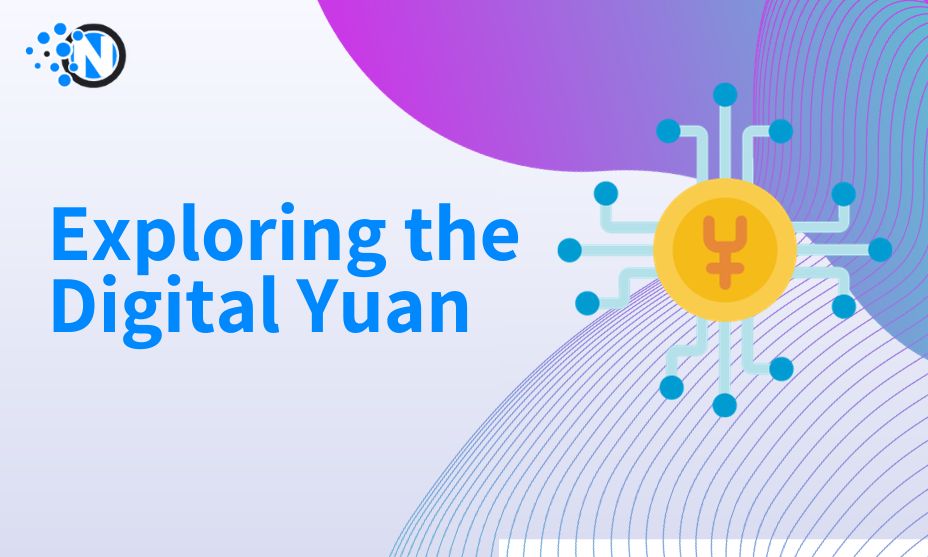Behind the Great Digital Wall: Exploring the Digital Yuan

Digital Yuan or DCEP (Digital Currency Electronic Payment) is the Chinese innovation that has become one of the main trends in digital finance of the twenty-first century and beyond having huge consequences for the whole world. The People’s Bank of China (PBOC) has taken a detailed approach to actualize this electronic version as its representation of China’s national currency – RMB. The nature of its fast development, which is also key to transforming economic frameworks, makes for an intriguing research topic.
In this article, we embark on a deep dive into the Digital Yuan, unraveling its origins, mechanics, and the profound impact it carries in the world of modern finance. As we delve deeper into the intricacies of the Digital Yuan, platforms like Yuan Profit provide a first-hand experience of its practical applications in online trading.
A Historical Perspective
Evolution of Money in China
China has a rich history of using various forms of currency, dating back to the Shang Dynasty (16th-11th centuries BC). The use of cowrie shells, metal coins, and even paper money can be traced through the dynastic eras. The idea of digital currency in China can be seen as a modern evolution of this long history.
The Road to the Digital Yuan
It is vital to look back and take us through the history behind the origination of the Digital Yuan. However, China began to consider the possibility of a central bank digital currency towards the beginning of the last decade due to increasing interest in virtual currencies such as Bitcoins. PBOC initiated researches and pilot studies on the possibilities of a digital currency.
Key Milestones in the Development
- 2014-2017: The PBOC established a Digital Currency Research Institute to study CBDC technology, leading to the first prototype.
- 2019: Pilot programs began in several cities, including Shenzhen and Suzhou, to test the Digital Yuan’s functionality.
- 2020: The Digital Currency Electronic Payment (DCEP) project accelerated, with wider testing, integration into mobile payment platforms, and preparations for the 2022 Winter Olympics.
Understanding the Digital Yuan
What is the Digital Yuan?
Definition and Concept
Digital Yuan is one such platform, which is also referred to as Digital Currency Electronic Payment, which is the electronic form of Chinese currency – Renminbi. It is a peer to peer digital cash system which was created and administered by the People’s Bank of china.
How it Differs from Cryptocurrencies
The Digital Yuan is quite unlike many times where it is confused with cryptocurrency. It is fiat currency that depends on their country’s government and cannot be considered as decentralized currency. Contrary to cryptocurrencies that rely on blockchain technology, the Digital Yuan depends on a more centralized ledger arrangement.

The Role of the People’s Bank of China (PBOC)
PBOC’s Motivation
The PBOC’s primary motivation behind the Digital Yuan is to modernize the financial system, increase financial inclusion, and provide a secure and efficient means of digital payment.
Central Bank Digital Currencies (CBDCs) Explained
A CBDC, like the Digital Yuan, is a digital representation of a country’s national currency. It’s issued and regulated by the central bank, making it a legal tender. CBDCs are distinct from cryptocurrencies, as they are not subject to the wild price fluctuations often seen in the crypto market.
Technology Behind the Digital Yuan
Blockchain and Encryption
The Digital Yuan utilizes blockchain technology for its infrastructure. This technology ensures secure and transparent transactions. Encryption techniques are employed to protect user data and transaction information.
Smart Contracts and Programmability
One unique feature of the Digital Yuan is its ability to support smart contracts. These self-executing contracts enable predefined rules and conditions for transactions, adding efficiency and automation to various financial processes.
Key Features and Functionality
Digital Yuan Wallets
Types of Wallets Available
There are several types of wallets for holding and using Digital Yuan, including mobile wallets, hardware wallets, and online wallets. Each offers different levels of security and accessibility.
Accessibility and Usage
The Digital Yuan is accessible to both urban and rural populations in China. Its ease of use has made it popular for everyday transactions, from grocery shopping to paying utility bills.
Transactions and Use Cases
Retail Transactions
The Digital Yuan is widely accepted in Chinese retail markets, offering a convenient alternative to physical cash. It’s particularly favored in small businesses and street vendors.
Read Also: The Pioneer of Cryptocurrency: Bitcoin
Cross-border Transactions
The Digital Yuan can streamline cross border trade by reducing the need for intermediaries and currency exchange fees. Its globalization is the key strategic goal for China.
Government and Business Applications
Government agencies and businesses have started using the Digital Yuan for various purposes, including distributing subsidies, collecting taxes, and settling interbank transactions. Its transparency and traceability make it a useful tool for these applications.
Impact on Financial Systems
Domestic Implications
Financial Inclusion
The Digital Yuan plays a vital role in expanding financial inclusion in China. It provides access to financial services for the unbanked and underbanked populations, reducing the reliance on traditional banks.
Monetary Policy
The Digital Yuan allows the central bank to have more direct control over the money supply, which can aid in implementing monetary policies such as quantitative easing or tightening.
International Implications
Potential Challenges to the U.S. Dollar
The global adoption of the Digital Yuan has the potential to challenge the dominance of the U.S. dollar in international trade and finance. This shift could have far-reaching geopolitical and economic consequences.
Implications for Global Finance
The Digital Yuan’s integration into the global financial system could lead to changes in the way international financial transactions are conducted, impacting the role of traditional banks and payment systems.
Regulatory and Privacy Concerns
Privacy Concerns and Surveillance
The Digital Yuan’s centralized nature has raised concerns about user privacy and government surveillance. Transactions can be traced, potentially leading to privacy breaches and surveillance risks.
Anti-Money Laundering (AML) and Know Your Customer (KYC) Regulations
To address concerns about illegal activities, the Chinese government has implemented strict AML and KYC regulations for Digital Yuan transactions. This has led to concerns about potential data breaches and surveillance.
Geopolitical Implications and International Cooperation
The international expansion of the Digital Yuan has triggered discussions and negotiations with other countries about its regulatory framework and interoperability with existing financial systems. These discussions carry significant geopolitical weight and can impact international relations.
The Road Ahead
Pilot Programs and Adoption
China’s ongoing pilot programs are crucial in refining the Digital Yuan’s features and addressing potential issues. Wider adoption is expected in the coming years as the infrastructure matures.
Global Influence of the Digital Yuan
China’s ambition to internationalize the Digital Yuan will likely continue to shape the global financial landscape. How other countries and international institutions respond to this influence will be a key development to watch.
Challenges and Obstacles to Overcome
The Digital Yuan faces several challenges, including technical hurdles, international regulatory issues, and concerns about user privacy. Overcoming these challenges will be essential for its long-term success.
Future Potential of CBDCs
The Digital Yuan is just one example of the growing trend of CBDCs worldwide. The future may see more countries adopting digital currencies, reshaping the global financial ecosystem.
Conclusion
The development of Digital Yuan, also referred to as DCEP, marks one major step toward changing what is currently China’s monetary system. On the other hand, the issues like the threat to the users’ privacy and government monitoring make it the greatest weakness for Digital Yuan. The path forward for the Digital Yuan is marked by a mix of opportunities and obstacles, all of which will be closely monitored by governments, enterprises, and individuals worldwide. As central bank digital currencies continue to gather momentum across the globe, the financial landscape is undeniably shifting towards an increasingly digital future.




